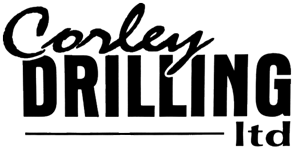Resources & Links
The following links may be useful should you need any information about ground water or water well drilling:
Deep Water Wells vs Shallow Wells
Many Canadians get their water from water wells; many of these are located in farms and properties in rural areas where city water supplies are unavailable. This makes a good water supply vital for these homes and businesses, but do you choose a shallow well or a deep well? Both have a great many variables, such as cost, flow level, condition during drought or flood, and water quality. This short article aims to show the differences between the two.
Shallow Wells
Shallow wells are ideal if your water source is close to the surface. A professional water well driller can check your water table and identify the optimum depth to which the well should be dug, usually from 25-50 feet below ground level.
Some of the benefits of shallow wells is that they are less expensive to build since there are lower labor and material costs. Typically, a well pump for a shallow well is not submersible, which means it needs to be placed above the ground, usually in a well house. Fortunately, this means it is easier to access and service should any maintenance be needed.
Additionally, shallow wells tend to have lower levels of naturally occurring minerals, like magnesium and calcium – which can cause hard water – as well as manganese and iron.
A drawback of shallow wells is that they do carry the risk of running dry, especially in dry climates or during drought conditions.
And of course, because they’re close to the surface, they can be prone to contamination from fertilized fields, septic systems, and other human activities. Shallow wells need to be treated and inspected occasionally to make sure the water is clean and safe.
Deep Wells
If your water source is much deeper, or if your property sits on rocky terrain, you may have to dig a deep water well. These wells tap into the water table deep below the ground, and can go up to 1000 feet below the surface. Deep wells tend to have lower potential surface contaminants because of the distance from the surface, but can have higher natural mineral concentrations, so you may need to install a water softener to reduce water hardness.
Some of the cons to deep water wells include their cost: they need significantly more labor and heavy equipment to construct, and the pump used to get the water to the surface is typically of the submersible type, which means that if problems occur, the pump needs to be hauled to the surface for maintenance.
There are benefits to deep water wells too. They are less susceptible to drought or water supply issues since their depth typically extends down below the level of any receding water levels, the equipment used for deep wells is less visible than with shallow wells, so a well or pump house isn’t required, and the water tends to require less monitoring for quality and flow.
Deep Well or Shallow Well: Which should I choose?
The correct answer will vary depending on the needs of your property, the depth of your water table, and the size of your budget.
Deep wells are more protected against drought and contaminants, they also cost a lot more to build. If your water level is close to the surface, a shallow well would cost you much less to drill and install.
Ideally you need to team-up with a professional company like Corley Drilling who can survey your land and help determine the best options available to you depending on your resources.
“Corley Drilling Ltd completed my well on time and on budget. They gave me 10gpm at 400ft! I have had no trouble with water in the 7 years since. They were courteous and caring and left no damage behind when the job was completed. We are very satisfied and would call them first if we needed another well at a new location.”
For more reviews on Corley Drilling, take a look at our Yellow Pages ad and our Google Business Profile!
The Importance of Well Maintenance
Save yourself time and money by taking preventative steps to ensure your well is working properly. By having your well checked routinely, you can ensure that your water is flowing efficiently and safely.
Water Flow
Some causes of slow water are:
- Accumulation of mineral deposits
- Growth of microorganisms
- Blockage by sand, gravel, or sediment
Well inspections can spot early signs of blockage or intrusion that could negatively affect how fast your water is pumped.
Water Safety
Safety is one of the most important aspects of your well. Have a water test annually to check for things like as E.coli or coliform bacteria. Look out for obvious signs of poor water quality: staining, odd taste, and odors.
Things You Can Do Yourself
There are some things that you can do yourself:
- Do a visual inspection by looking for damage.
- Check the cover of your well is not damaged.
- Keep records of inspections and servicing.
Extending Well Life and Efficiency
There are benefits to a regularly maintained well system that go beyond water flow and quality. A professional inspection helps you know the well’s condition. Most wells last 15-20 years, but with the good maintenance, you can maximize the life, and ensure your system will work more efficiently.
Contact Corley Drilling for information on maintaining and testing your well!
